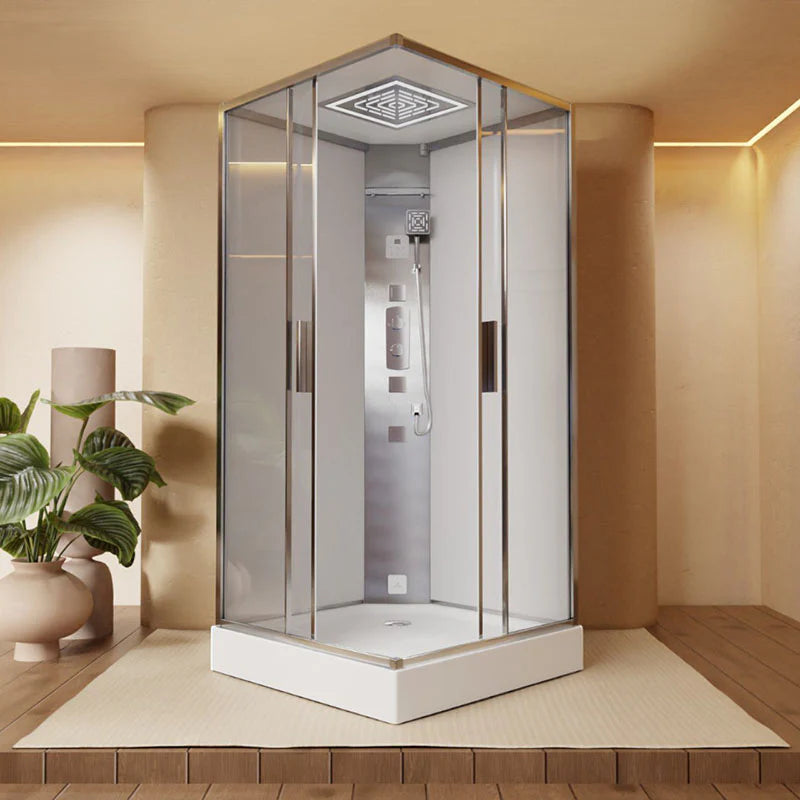Feeling rough with a cough that won’t quit? Step into a steamy escape. A Steam Room or Steam Bath might just be your new favourite remedy. The short answer: Yes, steam can help relieve coughing—by loosening mucus, hydrating airways, and soothing irritation. Keep reading to find out how to do it safely.

Understanding How Steam May Help with Coughs
The Science Behind Steam's Effect
Loosening Mucus and Phlegm
When warm steam enters your nasal passages, it helps thin out thick mucus. This makes it easier to cough up phlegm and clear your airways. For people battling chest congestion, it can feel like a breath of fresh air—literally.
Soothing Irritated Airways
Steam helps to relax inflamed tissue in the throat and lungs. The moist air reduces the scratchy feeling and helps ease that constant tickle. It’s particularly useful for dry, hacking coughs that interrupt your sleep.
Rehydrating Nasal Passages and Throat
Breathing in dry air often makes a cough worse. Steam works by rehydrating dry airways and soothing sore spots. Think of it as a warm drink—for your lungs.
Types of Coughs That May Benefit
Wet Coughs (Productive Coughs)
These coughs bring up mucus, often linked with colds or infections. Steam helps thin the mucus so it’s easier to expel, providing quicker relief.
Dry, Hacking Coughs (for Temporary Soothing)
Though steam doesn’t remove the cause of a dry cough, it can temporarily ease throat irritation. It softens tissues and reduces the urge to keep coughing.
Different Approaches to Steam Therapy for Cough Relief
The Steamy Shower Method
How to Maximise the Benefits
Close all bathroom windows and doors to trap the steam. Turn on the hot water and let the room fill with vapour. Sit and breathe slowly for 10–15 minutes. You don’t need to stand under the water—the steam does the work.
Direct Steam Inhalation (Bowl Method)
Step-by-Step Guide for Safe Inhalation
-
Boil water and pour it into a large bowl.
-
Drape a towel over your head to trap the steam.
-
Inhale gently through your nose for 10 minutes.
Essential Safety Precautions (Burn Risks, Eye Protection)
Always keep your face at least 30 cm from the hot water. Avoid leaning in too close or letting steam hit your eyes directly. Children should never use this method unattended.
Considerations for Adding Essential Oils
A drop or two of eucalyptus or peppermint oil may help. But don’t overdo it—strong scents can irritate airways. Always patch test first and consult a healthcare professional if unsure.
Humidifiers vs. Vaporizers for Cough
What is a Humidifier? (Cool Mist)
Humidifiers release cool mist into the air. They help keep your room at an optimal humidity level, especially in winter.
What is a Vaporiser? (Warm Mist/Steam)
Vaporisers heat water to produce steam. They’re similar to steam baths and may be more effective for breaking down mucus.
Choosing Between Them (Especially for Children)
For younger children, cool mist humidifiers are often safer. There’s less risk of burns, and they still help ease breathing.
Best Practices for Use and Maintenance
Use distilled water when possible. Clean your device daily to prevent mould and bacteria. Place it near your bed but not too close to your head.
What the Research Says: Effectiveness and Risks

Mixed Scientific Evidence
Studies Supporting Temporary Symptom Relief
Some studies show steam helps relieve congestion and improves comfort. People report feeling better after steam therapy—even if only temporarily.
Research Questioning Long-Term or Deeper Airway Benefits
However, other research suggests steam may not reach the lower respiratory tract effectively. The relief is often short-lived.
The Debate Around Steam's Penetration into Lower Airways
Experts debate whether steam can truly help deep inside the lungs. The consensus? It works best for upper airway symptoms, not deeper infections.
Important Safety Concerns and Potential Side Effects
Serious Burn and Scald Injuries (Crucial for Children and Vulnerable Individuals)
Boiling water and steam carry serious burn risks. Always supervise children and never use open bowls near pets or toddlers.
Potential to Worsen Asthma Symptoms
Steam can trigger asthma symptoms in some individuals. If you have asthma, speak with your doctor first.
Risks Associated with Improper Cleaning (Mould, Bacteria)
Steam devices must be cleaned regularly. Warm, damp environments are breeding grounds for bacteria and mould.
When Steam Therapy Might Not Be Recommended
Avoid steam if you have a fever, breathing difficulty, or a chronic lung condition—unless your GP advises otherwise.
Complementary Cough Remedies and When to Seek Medical Advice
Other Home Remedies for Cough Relief
Staying Hydrated (Warm Fluids, Broth, Tea)
Sip warm liquids throughout the day. This helps loosen mucus and keeps your throat moist.
Honey for Cough Suppression
A spoonful of honey (for those over 1 year old) may calm a tickly cough. It’s natural, tasty, and effective.
Saline Nasal Sprays
These sprays flush out irritants and moisturise dry nasal passages.
Avoiding Irritants (Smoke, Dairy, Alcohol)
Cut back on anything that worsens inflammation. Smoke, strong perfumes, and certain foods can trigger coughing fits.
When to Consult a Healthcare Professional
Persistent or Worsening Cough
If your cough lingers for more than 2 weeks, seek medical advice. It could be a sign of something more serious.
Difficulty Breathing or Chest Pain
These symptoms are red flags and require immediate attention.
Fever, Chills, or Body Aches
You might be dealing with a virus or infection. A doctor can help determine the cause and treatment.
Cough in Infants or Young Children
Always call a healthcare provider if your child has a persistent or severe cough. Their airways are more sensitive and need careful attention.
Takeaways
-
Steam therapy may help relieve symptoms of wet or dry coughs.
-
Steam rooms, steam baths, and hot showers can ease congestion and hydrate your airways.
-
Be aware of safety risks, especially for children and those with asthma.
-
Use steam as part of a broader care routine, not a cure-all.
-
Always consult a GP if symptoms are severe or don’t improve.






